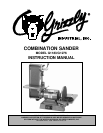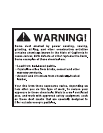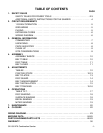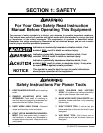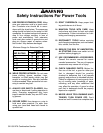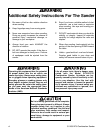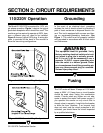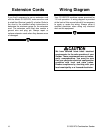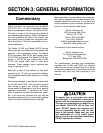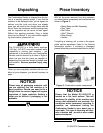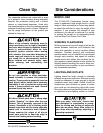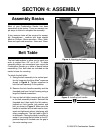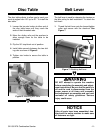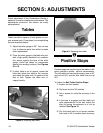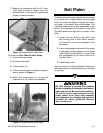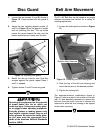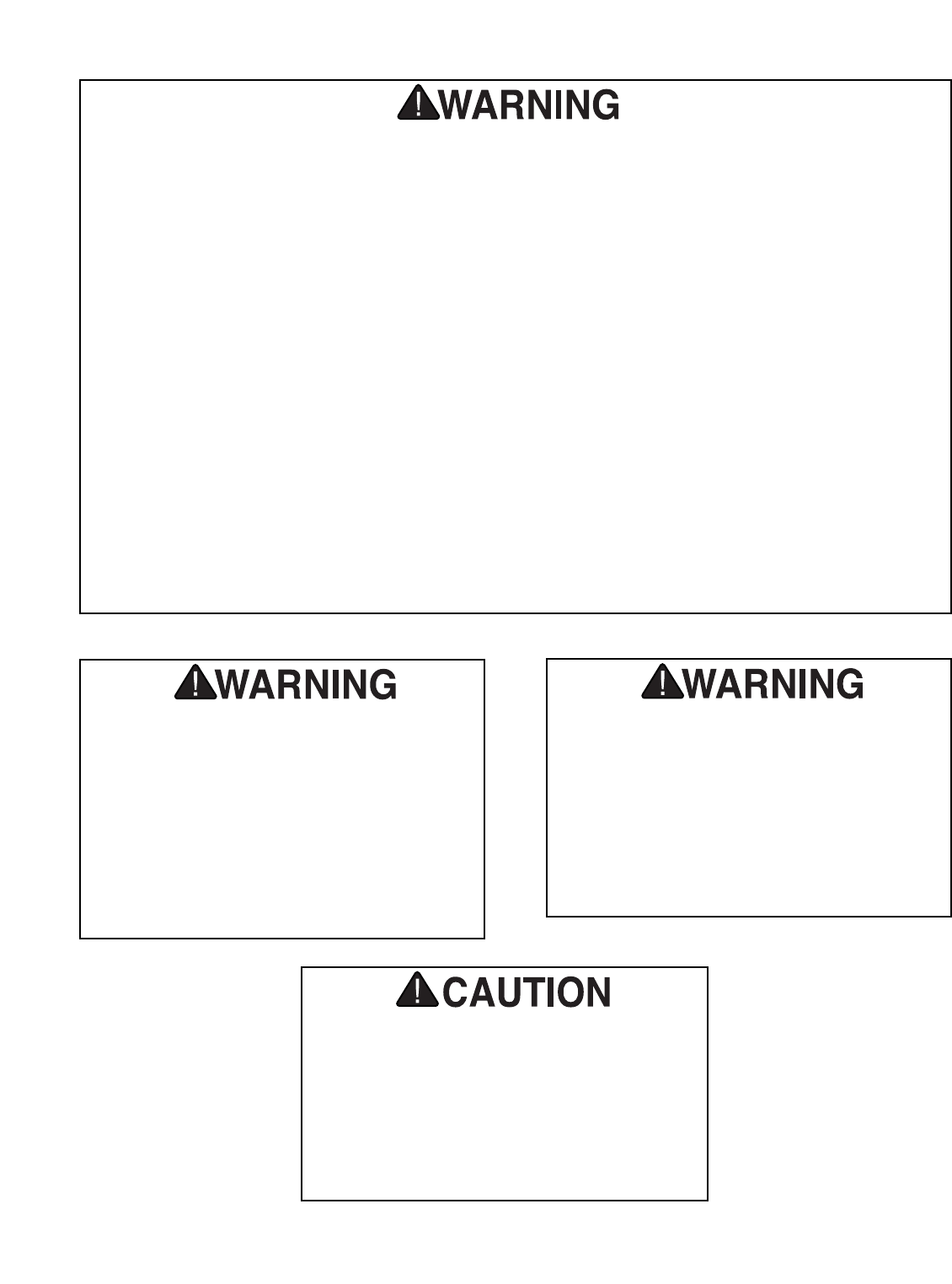
-4- G1183/1276 Combination Sander
Additional Safety Instructions For The Sander
1. Be aware of belt or disc rotation direction
when sanding.
2. Keep fingertips away from moving parts.
3. Never use excessive force when sanding.
Doing so greatly increases the chance of
personal injury, mechanical damage, or
damage to your workpiece.
4. Always feed your work AGAINST the
direction of rotation.
5. DO NOT operate the sander if the disc or
belt are damaged or badly worn. Portions
of sandpaper could be ejected from the
sander.
6. Even if you have a reliable method of dust
collection, use a dust mask or respirator
when sanding. Use eye and hearing pro-
tection as well.
7. DO NOT sand material when you doubt its
stability or integrity. Inspect all materials
carefully for foreign objects like nails and
staples.
8. When disc sanding, feed material into the
portion of the disc spinning DOWN toward
the table.
9. Habits – good and bad – are hard to break.
Develop good habits in your shop and
safety will become second-nature to you.
Operating this equipment has the potential
to propel debris into the air which can
cause eye injury. Always wear safety glass-
es or goggles when operating equipment.
Everyday glasses or reading glasses only
have impact resistant lenses, they are not
safety glasses. Be certain the safety glass-
es you wear meet the appropriate stan-
dards of the American National Standards
Institute (ANSI).
Like all power tools, there is danger asso-
ciated with the Model G1183/1276
Combination Sander. Accidents are fre-
quently caused by lack of familiarity or fail-
ure to pay attention. Use this tool with
respect and caution to lessen the possibil-
ity of operator injury. If normal safety pre-
cautions are overlooked or ignored, seri-
ous personal injury may occur.
No list of safety guidelines can be complete.
Every shop environment is different. Always
consider safety first, as it applies to your
individual working conditions. Use this and
other machinery with caution and respect.
Failure to do so could result in serious per-
sonal injury, damage to equipment or poor
work results.



